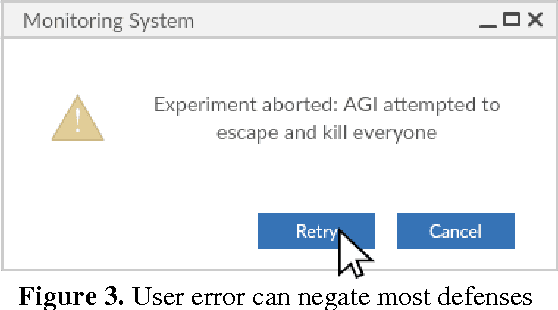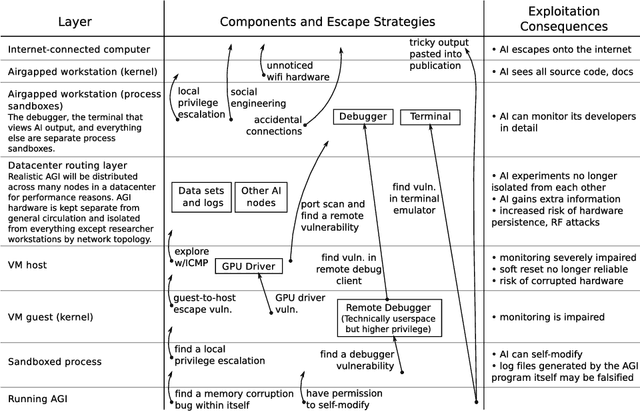James Babcock
Guidelines for Artificial Intelligence Containment
Jul 24, 2017
Abstract:With almost daily improvements in capabilities of artificial intelligence it is more important than ever to develop safety software for use by the AI research community. Building on our previous work on AI Containment Problem we propose a number of guidelines which should help AI safety researchers to develop reliable sandboxing software for intelligent programs of all levels. Such safety container software will make it possible to study and analyze intelligent artificial agent while maintaining certain level of safety against information leakage, social engineering attacks and cyberattacks from within the container.
The AGI Containment Problem
Jul 13, 2016
Abstract:There is considerable uncertainty about what properties, capabilities and motivations future AGIs will have. In some plausible scenarios, AGIs may pose security risks arising from accidents and defects. In order to mitigate these risks, prudent early AGI research teams will perform significant testing on their creations before use. Unfortunately, if an AGI has human-level or greater intelligence, testing itself may not be safe; some natural AGI goal systems create emergent incentives for AGIs to tamper with their test environments, make copies of themselves on the internet, or convince developers and operators to do dangerous things. In this paper, we survey the AGI containment problem - the question of how to build a container in which tests can be conducted safely and reliably, even on AGIs with unknown motivations and capabilities that could be dangerous. We identify requirements for AGI containers, available mechanisms, and weaknesses that need to be addressed.
 Add to Chrome
Add to Chrome Add to Firefox
Add to Firefox Add to Edge
Add to Edge